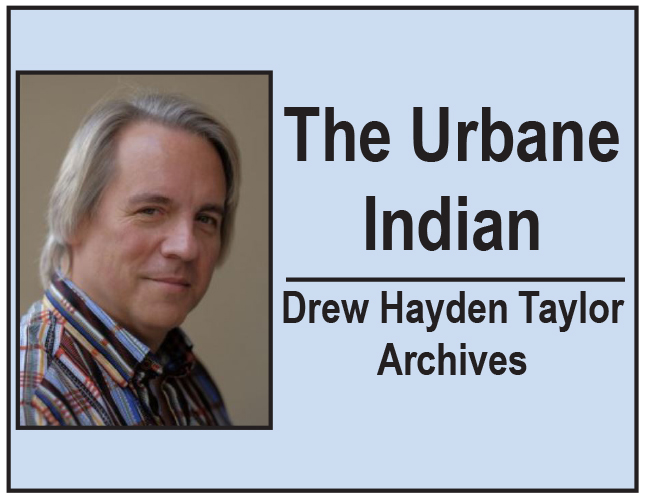
By Drew Hayden Taylor
Originally published in May 2016
The northern Ontario community of Attawapiskat is only too familiar with tragedy—flooding, chronic housing shortages, government disregard, flagrant misspelling of its name. And now a frighteningly high rate of suicide and suicide attempts amongst the youth there.
It would be enough to break their hearts, if their hearts weren’t so strong. Next to follow, was a barrage of the unsympathetic questions that usually follow any of these calamities, usually asked by puzzled southern non-Native individuals or, as we like to call them in this politically correct age, people of pallor.
Why don’t you just move?
Native people get questions like this all the time. During the time of the Truth and Reconciliation Commission, I can’t tell you how many times I’ve heard those people who’ve had childhoods unencumbered by a steady diet of Manifest Destiny ask in serious baffled frustration, “Why don’t you people just get over it?”
Get over it, huh? It’s not a wall, people!
And before those questions there was the always popular, “What do you people really want?” I would always answer with “Well, stop killing our women, and stealing our children and that would be a good beginning!”
Prior to that, it all started with “Would you mind signing here?”
Admit it: You’ve likely wondered it yourself why the Attawapiskatians (or Attawapiskatites) don’t just roll up their blankets, hop a bus and fry their bannock somewhere else up river.
Scott Gilmore of Maclean’s has thought about it. Walrus Magazine editor-in-chief Jonathan Kay has considered it. Even former Prime Minister Jean Chretien has suggested it.
Well, it’s not that easy. It’s a complex issue that’s not so easily solved by just a simple change in geography. There’s a certain connection to land and environment. A community like this has a little more heart and soul than an apartment.
I’m sure you’ll remember the famous story of Randall Truman, the man who lived at the foot of Mount St. Helens when he was told the mountain might just possibly blow up. Told this repeatedly, the man refused to move, regardless of the threat. This was his home and he died with it.
Okay, maybe not the best example, but never underestimate a person’s, or people’s, connection to their home, regardless of the dangers, especially with Native people. Keep in mind that the Cree of Attawapiskat used to be nomadic, following the caribou and other game, as the need arose.
That is until they met other nomadic, but non-Native people, who found it their mission to travel the world telling people like the Cree they could no longer be nomadic, under penalty of law.
Then these same formerly nomadic people from across the ocean would later relocate the children of these formerly nomadic Native people to other faraway places.
Also, past experience has taught Indigenous people that once they have been relocated, these same non-Native people usually find whacks and whacks of fur, gas, diamonds or Aeroplan miles buried somewhere in the territory. So, 500 years of colonization has given First Nation people a learned aversion to forced relocation.
And as for finding some place better to live... Where is it better? I suppose they could go to Calgary—no wait, that place also has a history of flooding. What about Vancouver? No, I’ve heard the housing situation there is almost as bad as in Attawapiskat.
That’s the point. The grass may always be greener on the other side, but it could come with crab grass and poison ivy too. With ticks.
People need to understand that the problems in Attawapiskat and other northern communities
run deeper than simply location. Many of the issues plaguing that community would simply move with the people. What needs to be dealt with first are the matters infecting these people’s lives that spring from hundreds of years of colonization and the paternalistic attitudes held by government.
Social malaise doesn’t come from the house and street address. It comes from history.
Why don’t they move? Here’s a counter question: Why don’t you move? In case you weren’t aware, there were quite probably suicides, drug issues, environmental problems and general matters of social unrest where you currently fry your eggs and practice your yoga.
Cree communities are not R.V. parks, ready to uproot at a moment’s notice.
Following that yellow brick road just exchanges one set of problems for another. Unlike most people who ask these unfortunate questions, I’ve been to Attawapiskat and it’s actually a beautiful community. I’ve talked to their children. I’ve toured the village. I have also been around the world and seen far worse places. I can’t blame them for not necessarily wanting to move.
